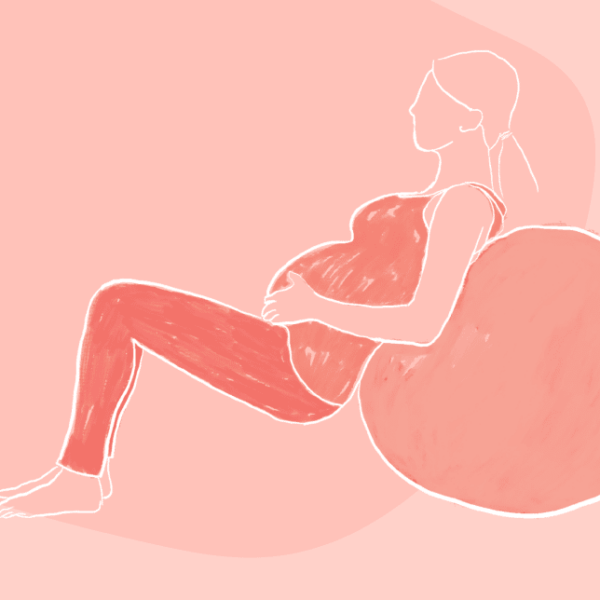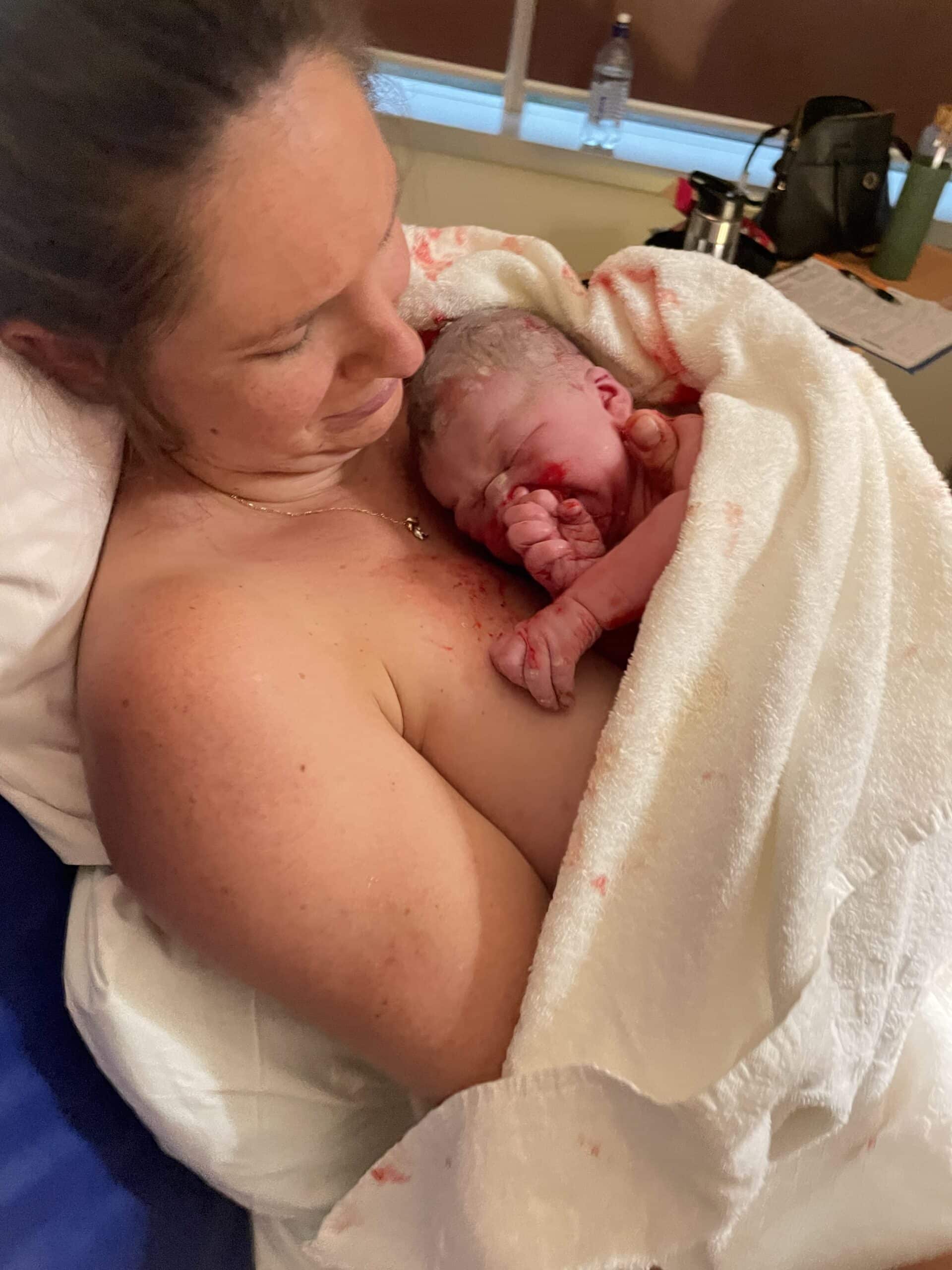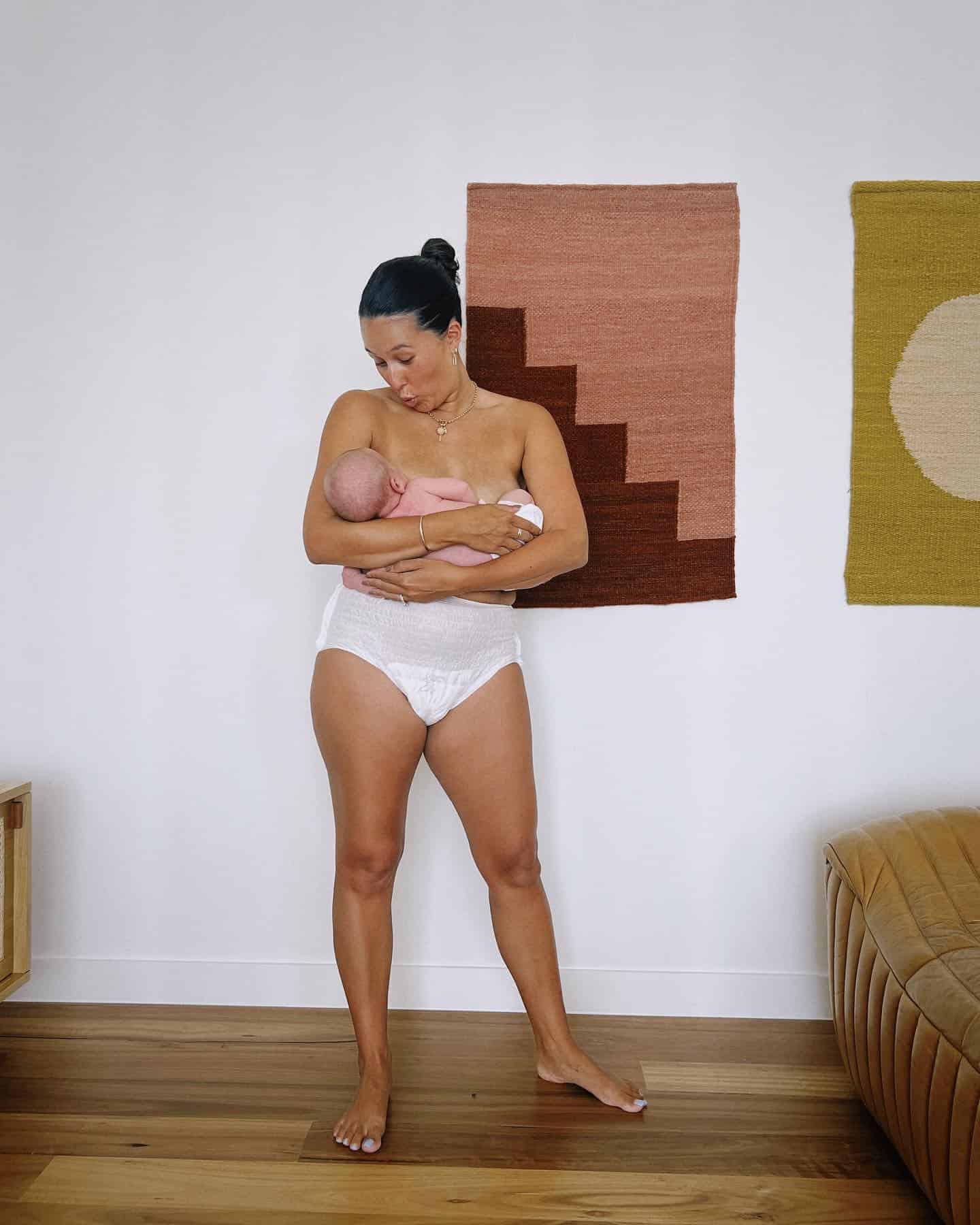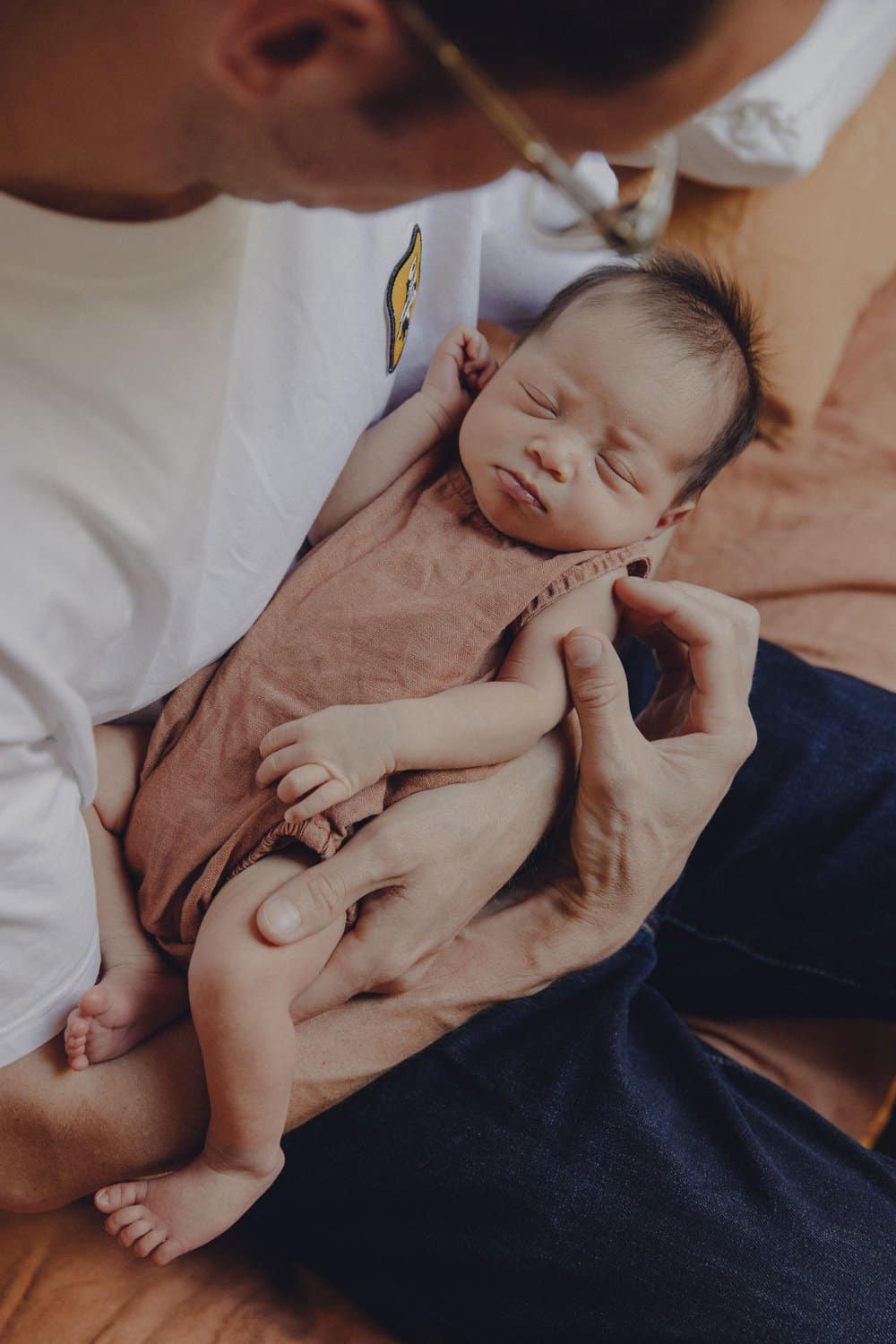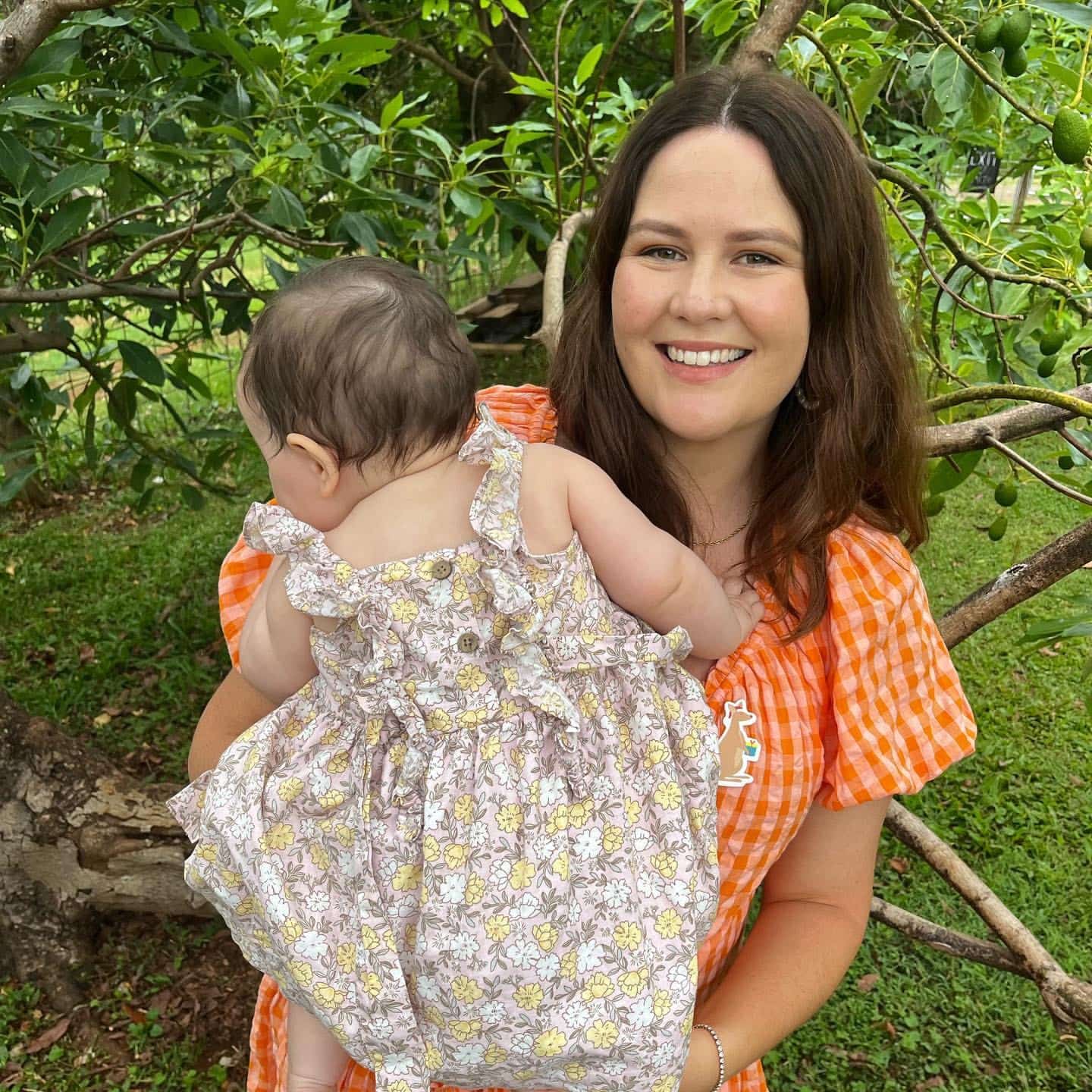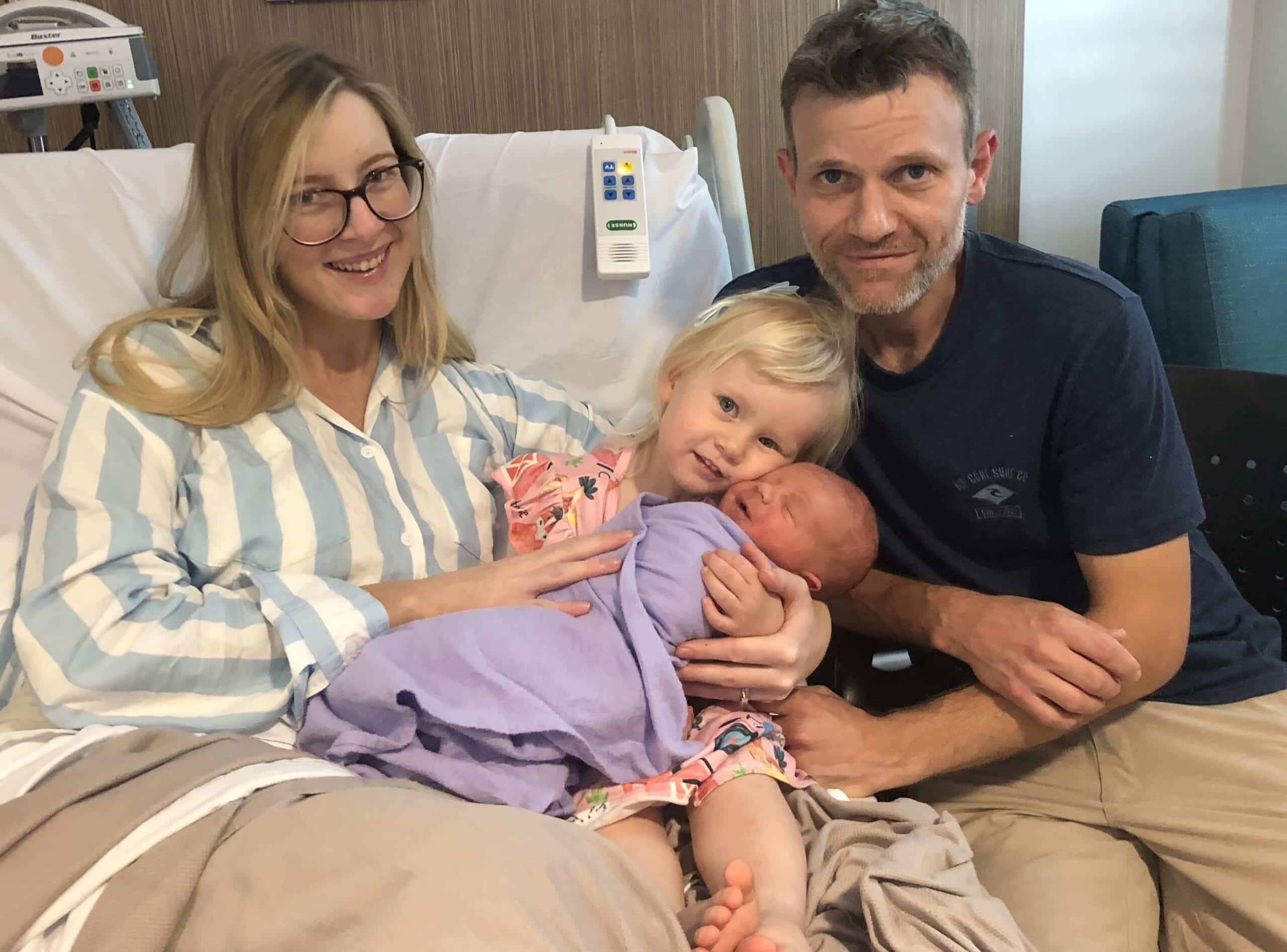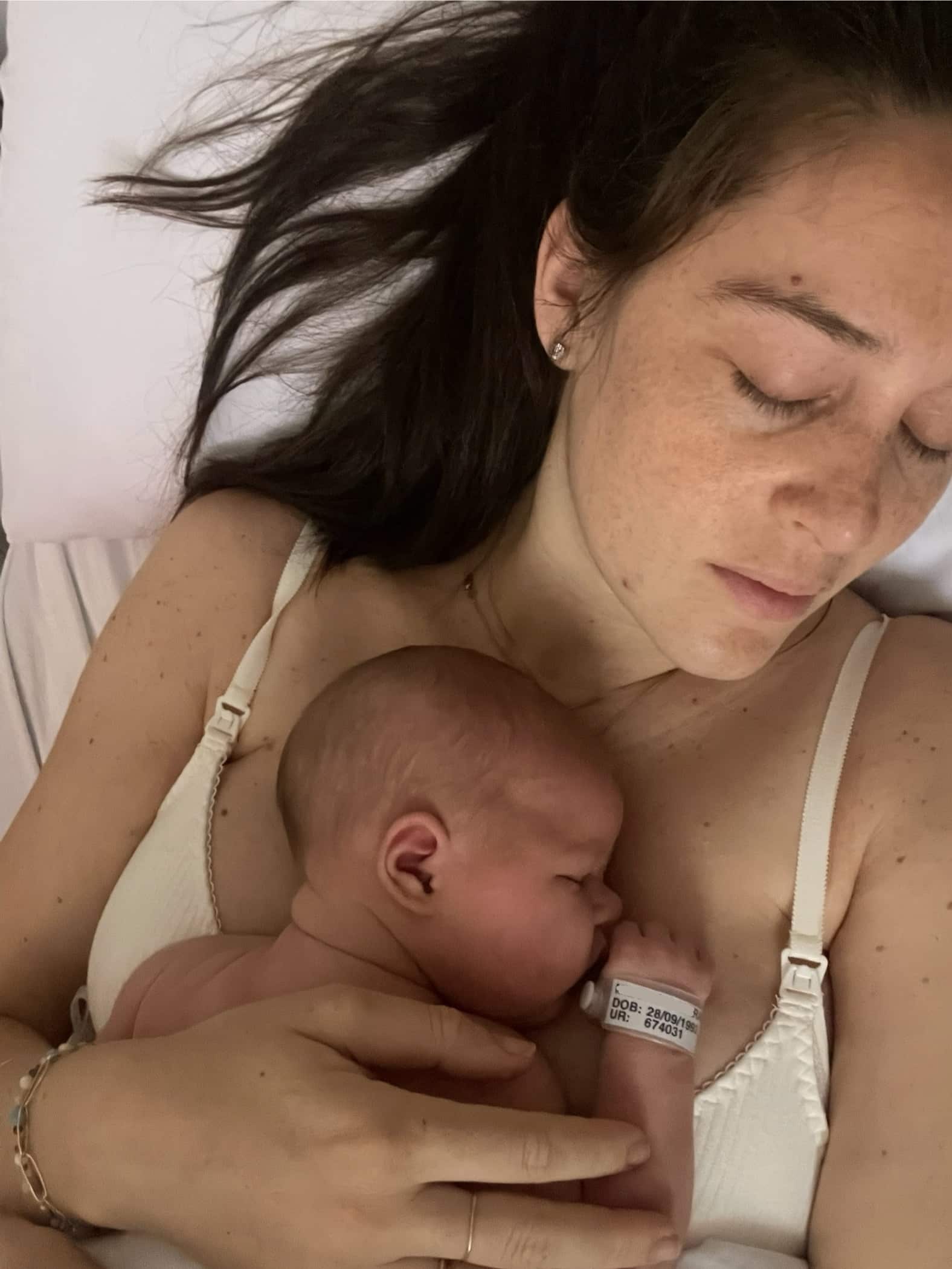Podcasts Rebekah
EPISODE 306
Rebekah

Rebekah was 21 when she fell pregnant with her son, Noah. She was on the pill, hence the pregnancy was unplanned, and it prompted lots of discussions with her partner, Cameron, about whether having a baby was the right choice for them at the time.
“I’m very academically driven and I also come from a conservative family so I’d already told myself that if I fell pregnant while studying, I wouldn’t go through with it. At the end of the day, Cameron and I had been together for three years and we’d had a lot of conversations about our future children. Within a few days of discussing it, we were assured that it was the right choice for us; the fear went away and we were just so excited.”
Rebeakh was living in Brisbane at the time and she did her research in regards to models of care. She asked her bulk-bill GP to refer her to the birth centre at her local hospital and she was lucky enough to get a place in the coveted programme.
“My midwife was really direct about the importance of preparing for breastfeeding, especially in regards to latching and troubleshooting breastfeeding issues. At my 34 weeks scan to check the baby’s size after my Gestational Diabetes diagnosis, we discovered that Noah was breech. My midwife encouraged me to attempt a vaginal breech birth, she gave me so many resources to educate me and she really planted the idea that it wasn’t something to freak out about. She also told me about spinning babies; exercises to encourage the baby to turn head-down. I tried everything and then I requested an ECV. I booked in at 37 weeks and they had a really experienced OB doing it. I had to drink one litre of water to push the baby up out of the pelvis and it all happened really quickly, he turned and I started preparing for a vaginal birth with a head-down baby.
“One morning I noticed pink mucous in my undies and I had achy feelings in my lower back. A couple of days later I got into bed and as soon as I lay down I felt my first contraction. Noah was posterior so it was just a radiating back contraction; I felt nothing in my abdomen. They were coming every five minutes or so and the intensity of them shocked me. The only place I could get comfortable was in the bath; I had to be leaning forward or sitting up. We stayed the night at home and in the morning I was feeling really drained and felt like I needed pain relief. We got to the hospital at 8:30am and I was 3cm. I had the water injections in my back and it was the worst experience, they were really awful, and I didn’t get any relief from them.”
Rebekah opted for an epidural although it didn’t numb her completely, she was still able to get onto all fours. Her second stage was difficult – she found it really hard to know how and when to push. She agreed to an episiotomy and vacuum to adjust the angle of Noah’s head and when he was born he went straight onto Rebekah’s chest. Her catheter had been removed to make space for the vacuum and it wasn’t till hours later that her sensation returned and she had a full bladder but couldn’t urinate. Her midwife put a catheter in and she had instant relief but in the days following she couldn’t pass urine at all which prompted incontinence issues in postpartum. She stayed in hospital for five days and the continence team gave her options to self-catheter at home.
“I was really uncomfortable with the option of an in-out catheter but it trains the bladder to have the sensation to urinate. I was really nervous but it wasn’t as bad as I thought it would be; I put lubricant on the catheter and it went in really easily. My follow-up care was amazing but using the catheter was really inconvenient because I had to sterilise everything and write notes before I could feed Noah and he’d be screaming…it was really stressful. I was really well connected with support and I saw a women’s health physio and I healed really well and had no incontinence issues between pregnancies.”
Rebekah had MGP care for her second pregnancy but again, her baby was breech. She worked through her fear, she was open to the possibility of a vaginal breech birth and she planned an ECV for 37 weeks.
“On the Saturday morning I woke early with mild cramping. I was 36+5 and I really wanted to have my ECV on the Monday so I ran a warm bath and did some meditation and told the baby that it was her brother’s birthday and she couldn’t be born today. It did the trick and I didn’t feel anything for the rest of the day. I had lots of energy which was surprising. That night we had dinner and Noah’s cake and I was lying next to him in bed and I couldn’t get comfortable. I went to my bed to lie down and I felt a pop – my waters had broken. My midwife was on leave so I had a different midwife, Jo. I was preterm and presenting breech so I had to go to hospital and we got there about 9:30pm. The CTG showed that the baby’s heart rate was great and then I had a scan to confirm that she was breech, no cord around the neck and she was bum down, feet near her face, so everything was looking good for a vaginal breech birth.”
Rebekah’s OB wanted her to stay in hospital overnight but Rebekah really wanted to be in the comfort of her home. She had to sign a “discharge at own risk” form, an experience that wasn’t overly positive and left her feeling like she was judged, despite the fact that she was going with her gut feeling.
“When I got home I was having a hot shower and I was aware that I was feeling tense and negative from the hospital experience so with each exhalation I let go of it all and it helped me to relax. By the end of the shower I was really relaxed and I got into bed and went to sleep but before long I woke up with contractions. I got up and put the TENS machine on and once I couldn’t sleep anymore I went downstairs to update my birth preferences. I was driven to do it because of the preterm rupture of membranes and I wanted to be clear that I was going to attempt a vaginal breech birth and I made my preferences known in regards to monitoring and hospital policy.
“I was humming through my contractions and I felt the pressure to bear down so I called my midwife and she encouraged me to meet her at the hospital. It was a slow journey because even getting in the car required me to pause a lot. I was worrying about crossing the road because every ten or so steps I had to stop. I met my midwife and she got me straight away and I sat down on a chair while Cameron set up the LED lights. I swayed on a swiss ball and leaned forward onto Cameron and the midwives were really reassuring, they kept telling me that the baby was doing beautifully based on the doppler reading.
“Affirmations made such a big difference when the contractions were so intense at the peak, and they got me through. Even though I was coping well I remember telling Cameron and my midwives that I couldn’t do it anymore. The OBs were lingering outside the room but my midwives worked really hard to honour my preferences and keep the room calm and quiet. Once I got on the bed everything was a bit of a blur. I was on all fours and my moans turned into intentional pushes which were grunts, it was really clear when I had to push and when I had to stop. There’s one particular push where I felt a huge relief of pressure and this was her body and limbs born. It was a hands-off birth, they let her hang and didn’t touch her at all. On the next contraction I pushed her out and they passed her to me and she was really healthy and had an APGAR of 9. I felt amazing!”
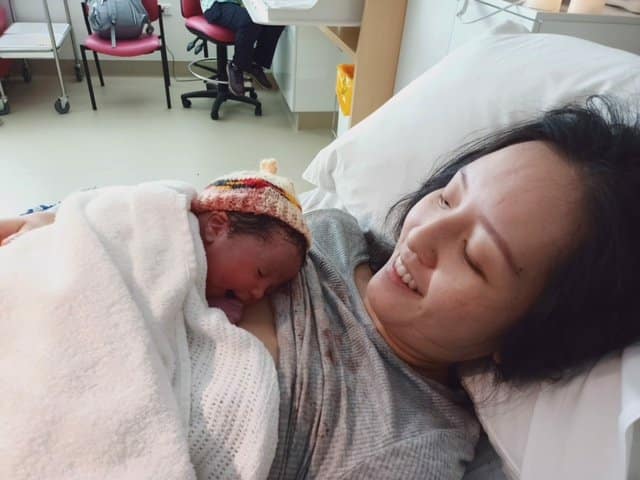
Categories
Related Products
-
The Birth Class
108 reviews$249.00The empowering online childbirth education program that will help you confidently prepare for birth.
Join the conversation
Sign up to get the latest updates, freebies, podcast releases straight into your inbox
@AustralianBirthStories
Follow along with us
@AustralianBirthStories
Follow along with us
@AustralianBirthStories
Follow along with us
@AustralianBirthStories
Follow along with us
@AustralianBirthStories
Follow along with us
@AustralianBirthStories
Follow along with us
@AustralianBirthStories
Follow along with us
@AustralianBirthStories
Follow along with us
@AustralianBirthStories
Follow along with us
@AustralianBirthStories
Follow along with us
@AustralianBirthStories
Follow along with us
@AustralianBirthStories
Follow along with us
